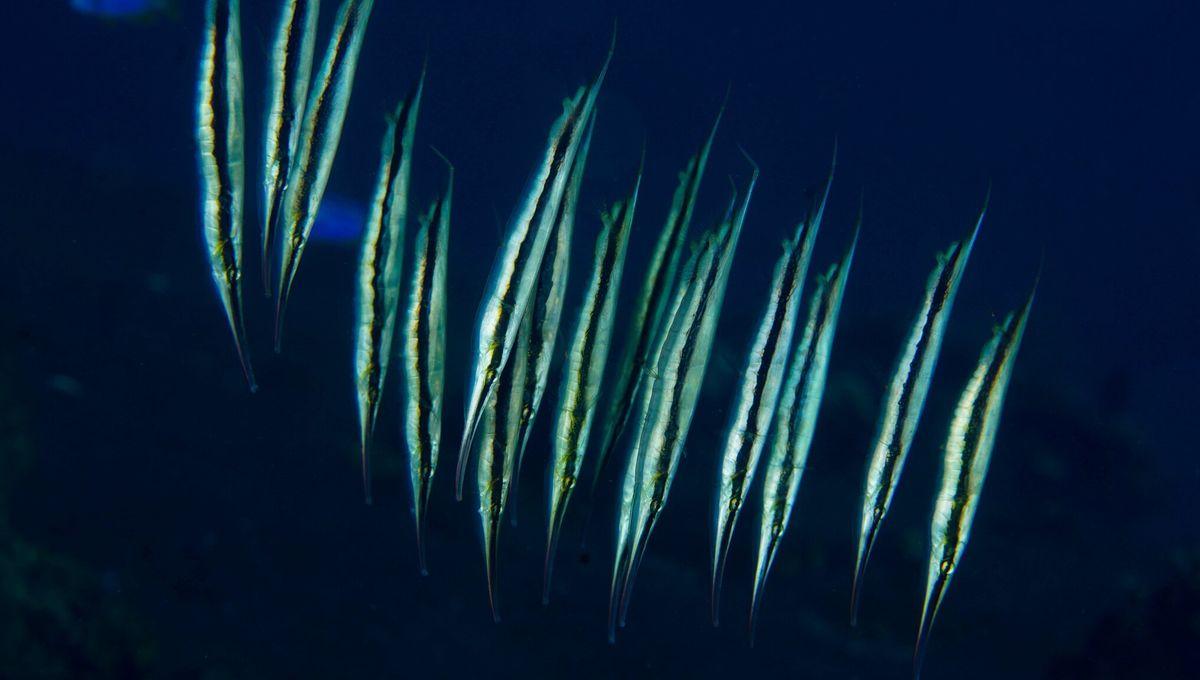
Seeing a fish floating vertically might normally be cause for concern, but in the case of Aeoliscus strigatus – better known as the razorfish or coral shrimpfish – swimming snout down is nothing to be worried about. So why exactly do they do it?
Masters of disguise
The answer lies in where these characteristically long, razor-thin (hence the name) fish are typically found: in the branches of corals, seagrass beds, and sea urchin spines.
Swimming vertically allows the razorfish to hide amongst them, even when moving in large, synchronized schools. Their body color also helps them out here, with those living in different habitats exhibiting different colors that camouflage them; razorfish found in seagrass habitats, for example, often have a greenish-yellow tint to their backs.
Concealing themselves using this unusual method has a two-fold purpose; it not only helps in evading larger, predatory fish, but when it’s their turn to act as predator, it means that they have a solid chance of sneaking up on their prey.
Razorfish prey usually consists of small invertebrates, like amphipods and copepods. These tiny crustaceans sometimes like to make their home in sea urchin spines but, thanks to the razorfish’s creative method of disguise, a house viewing can become deadly before they’ve even had a chance to clock that there’s an intruder.
Mystery fish
Their eye-catching approach to swimming isn’t the razorfish’s only notable trait. Their small bodies are encased by thin, bony plates of transparent armor, and their fins are also unusual; not only is the tail fin found on the ventral side, but it’s also replaced in its usual position by the dorsal fin, the first spine of which is angled and is jointed, giving it a movable tip.
You’d think, given this collection of unusual characteristics, that scientists would know everything there is to know about razorfish. However, despite the fact that they make both a popular aquarium fish and in the wild have a range that spans across several coasts meeting the Indo-West Pacific, little else is known about razorfish beyond that described above.
That not only goes for biological features like how they reproduce or their age of maturity, but also just how many of them exist in the wild. This comes down to a lack of dedicated population estimates, which in turn makes it difficult to know their conservation status – the IUCN Red List currently has the species listed as “Data Deficient”.
However, as their primary habitats of seagrass meadows and coral reefs see global declines as a result of climate change, finding out more about razorfish may be key to ensuring these delightfully strange animals stick around for years to come.
Source Link: Why Do Razorfish Swim Vertically?